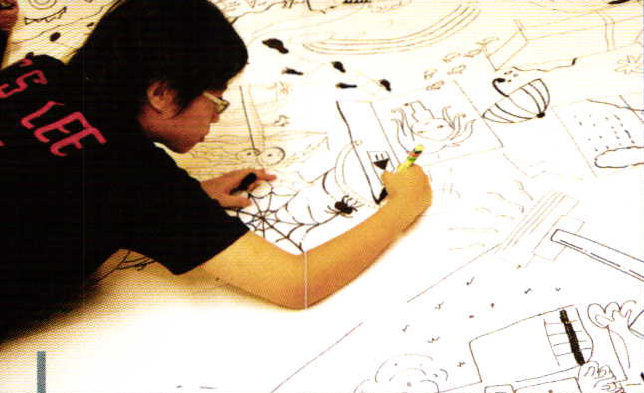

Kaifongs may be early migrants from China who have knowledge in farming. We have done it on rooftops and in urban locations, either fixed farmland or movable pots. “Experience tells us that share-farming works well in connecting the Kaifongs. An important part of empowerment is to enable them to sustain themselves financially with the type of skill sets they have.” Selling collectibles, sure but cooked food, even better. “Think from their perspectives – small local economic opportunities in public space are key to this district. HKILA Work Group met with social workers of SoCO and YWCA Sham Shui Po in March 2021 Both are NGOs based in Sham Shui Po working with the urban poor and have extensive knowledge of Kaifongs' needs. Members of the HKILA Transitional Housing Work Group took the design ideas to seek advice from The Society for Community Organization (SoCO) and Hong Kong Young Women's Christian Association (YWCA) Integrated Social Service Centre. Cross-disciplinary CollaborationĪs attractive as the design may be, how will people in the local community, the Kaifongs, react? Will we fall into the modernist paradox of injecting a proclaimed egalitarian future by creating objects of an imagined social and aesthetic order within a utopian public sphere? (2) These modules form the basis of transformation they are the basic frames for an incremental open space to be developed by the future community. The modules also feature flexible furniture, movable sliding doors, solar panels, etc, serving communal and environmental needs. Each module can be combined and arranged creatively to perform a wide range of functions – from the playground, gathering spot, market stall to an open-air cinema. The design team developed four 2.5(W)x 4(L)x 2.5(H)m modules for “play”, “farm/market”, “lawn/leisure”, and “resting/activity”.
HONG KONG CREATION WORKSHOP SERIES
Inspired by Chilean architect Alejandro Aravena’s incremental housing, a group of Year 4 students from The Technological and Higher Education Institute of Hong Kong (THEi) continued to develop the modular design into a series of Modular Integrated Construction (MiC) landscape units which are easy to assemble/dismantle and are transformable.ĭesign Team (from left to right): Emily Kwok, Andy Ng, Po Chan, Jenny Chan (Check out our article on the first workshop here. The modular designs inject creativity and vibrancy to the community while balancing maintenance and operational concerns. Landscape architectural students and young practitioners were invited to brainstorm options based on a modular design approach for its mobility and multifunctionality.

The first HKILA Transitional Housing workshop was held in January 2021. From Half-A-House to Transformable Landscape
HONG KONG CREATION WORKSHOP FULL
With full awareness of the extreme social complexity of this site, the Transitional Housing Work Group of the Hong Kong Institute of Landscape Architects (HKILA) set out to collaborate closely with NGOs based in the district to organise the second workshop of the initiative. It is a site full of potential for landscape interventions. Adjacent to the vacant site there is a linear park leading to a public housing estate. Nevertheless, there is an empty vacant site freed up recently after the demolition of a footbridge immediately outside the site at Yen Chow Street. Both project sites are located in Sham Shui Po and are characterised by their limited site area, and thereby limited opportunity for doorstep open space. Their first project “Nam Cheong 220” was completed in 2020, while their second project is underway at Yen Chow Street. In view of the urgent housing needs of low-income households currently living in inadequate housing, the Hong Kong Council of Social Service (HKCSS) launched the Modular Social Housing Project. Housing has been a severe social problem in this congested city - more so in Sham Shui Po. This is Sham Shui Po, the poorest urban district of Hong Kong. If you head southward and walk past a few residential towers recently built under urban renewal schemes, you will reach the abutment of the infamous Tung Chau Street Flyover and Tung Chau Street Park - once and still are popular spots for the homeless. Some of them have been illegally subdivided into flats as small as 7-13 square metres per household (1), housing the most underprivileged population of Hong Kong.

The street is flanked by old tenement buildings. As you step out of Exit A2 of the Mass Transit Railway (MTR), you are on a shabby street with green metal vendor stalls flocks of grassroots put out a cloth on one side of the narrow street displaying their “collectibles” for sale.


 0 kommentar(er)
0 kommentar(er)
